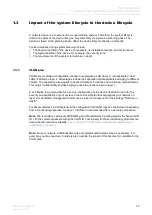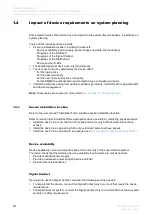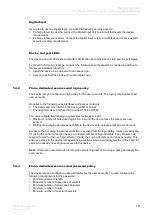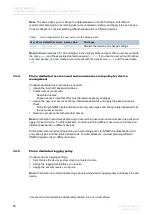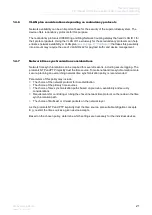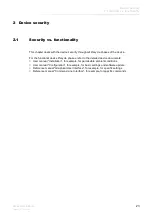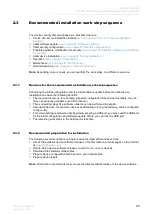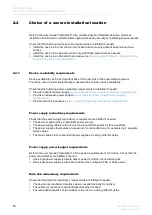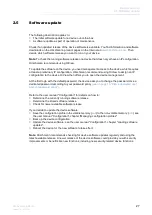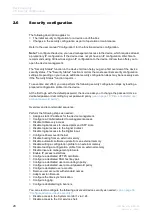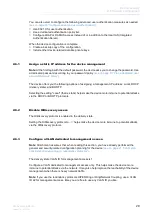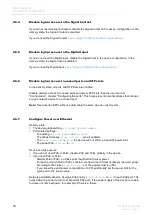
Security planning
1.2
Defense in depth
15
UM Security BRS-2A
Release
8.7
05/2022
1.2
Defense in depth
1.2.1
Purpose
Defense in depth is a strategy that employs various independent security measures to guard an
asset under consideration against specific attacks.
A system that employs defense in depth first confronts an attacker with a particular barrier. If an
attacker overcomes this barrier, the system presents another barrier of a different type. A minimum
of 2 barriers of different types shall guard any system asset under consideration. This layered
security approach is considered best practice. It potentially demoralizes an attacker while taking
the imperfection of real-world security barriers into account.
1.2.2
Defense in depth vs. hardening
In comparison to hardening, defense in depth is a more selective and structured approach. Defense
in depth employs a specific subset of all conceivable security measures.
Hardening can be characterized as defense in broad. It aims at closing as many weaknesses in any
barriers as possible and reasonable. A strategy for hardening may include the concepts "least
necessary functions" for the device and "least necessary privileges" for user accounts.
Develop a strategy for defense in depth first. Then complement it by hardening.
1.2.3
Responsibilities
Defense in depth as well as hardening need planning, implementation and maintenance. It is the
responsibility of the system operator to perform these steps.
Hirschmann recommends that you consider all security measures given in this manual, and to
select those that are most relevant for the actual situation.
1.2.4
Example
ID Barrier
Description
System level
1
Internet Firewall
An attacker must overcome the internet firewall between to get
access to the company Intranet.
2
Industrial Firewall
An attacker must overcome the industrial firewall to get access to
the industrial network. The industrial firewall separates the
industrial network from the company Intranet.
3
Dedicated device
management VLAN
An attacker must overcome VLAN restrictions to snoop packets
like unknown unicast frames of device management traffic.
Device level
4
Secure management
protocols only
An attacker must overcome encryption to snoop packet contents.
Summary of Contents for HIRSCHMANN HiOS-2A
Page 6: ...Contents 6 UM Security BRS 2A Release 8 7 05 2022 ...
Page 8: ...Document History 8 UM Security BRS 2A Release 8 7 05 2022 ...
Page 10: ...Safety instructions 10 UM Security BRS 2A Release 8 7 05 2022 ...
Page 54: ...Network security support 3 11 Configure logging 54 UM Security BRS 2A Release 8 7 05 2022 ...
Page 62: ...Index 62 UM Security BRS 2A Release 8 7 05 2022 ...
Page 66: ......

















